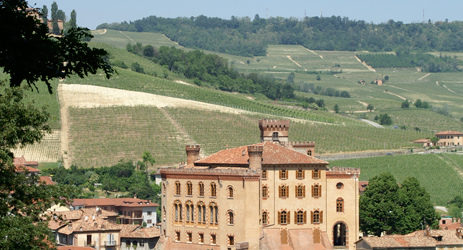Inspired by the French Appellation d'origine Contrôlée (AOC) system, Italian wines established its DOC system in 1975, with Vino da Tavola being the lowest of the pyramid and DOCG being the highest. But due to the diversity of geographic condition in Italy, another category - IGT - was set up, allowing more innovative wines of higher quality to be classified.

• Vino da Tavola
Vino da Tavola means ‘Table Wine’ in Italian. Like in other EU countries, this is the lowest category in the Italian wine laws, and defines a large proportion of wines produced in Italy. Wines in this category do not need to specify their geographic source, grape variety or the vintage.
An interesting fact worth mentioning is that, as we explained in the previous Tip of the Day, many quality wine makers in Tuscany used to brand their highly priced wines made outside the DOC regulations as ‘Vino da Tavola’. Now many of them are categorized as DOC or IGT under the newly-established regulations. Thus the Vino da Tavola category is considered to have played an important role in transforming Italian wine laws.
• Indicazione Geografica Tipica (IGT)
This classification is similar to vin de pays in France. It allows those quality ‘outlaws’ wines which can’t be defined as DOC to be classified within the DOC system, while giving them more flexibility in terms of grape varieties and area of production. It also allows those above-average Vino da Tavolas to differentiate themselves from those bulk-produced table wines.
• Denominazione di Origine Controllata (DOC)
Denominazione di Origine Controllata is the Italian equivalent of the French ‘Appellation d'origine Contrôlée’. The classification is very similar to AOC, which defines factors such as the geographic area of production, grape varieties, alcohol levels and yields. However, viticulture in Italy is very different to that of France. Because the geographic conditions vary hugely within the same DOC area, the inflexible DOC rules can hardly apply to all of the producers within that area. Thus this overly strict classification proved problematic and was unwelcomed by many quality wine producers. In 1992, a reformed version of DOC regulation was put in place, which divided large DOCs into smaller territories to make this classification viable to more producers.
• Denominazione di Origine Controllata e Garantita (DOCG)
DOCG, with the ‘G’ (garantita) at the end indicating ‘guaranteed’, defines the finest Italian wines including Barolo, Barbaresco, Chianti and Brunello di Montalcino. All DOCG wines must be tasted by licenced personnel from the Ministry of Agriculture before being bottled, and they will then carry a DOCG seal at the top of the bottle.
All rights reserved by Future plc. No part of this publication may be reproduced, distributed or transmitted in any form or by any means without the prior written permission of Decanter.
Only Official Media Partners (see About us) of DecanterChina.com may republish part of the content from the site without prior permission under strict Terms & Conditions. Contact china@decanter.com to learn about how to become an Official Media Partner of DecanterChina.com.






Comments
Submit